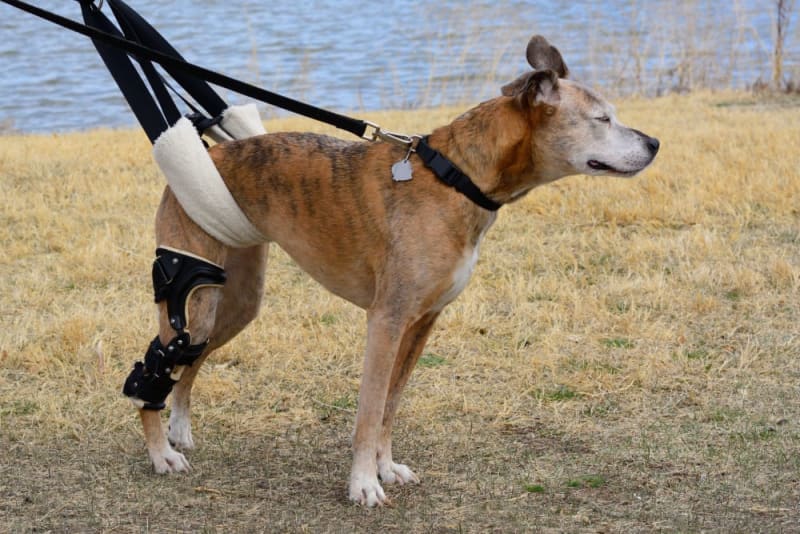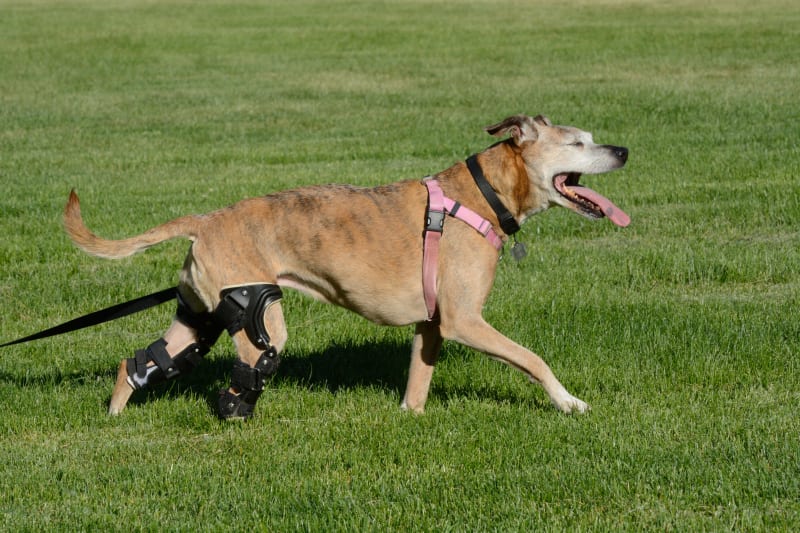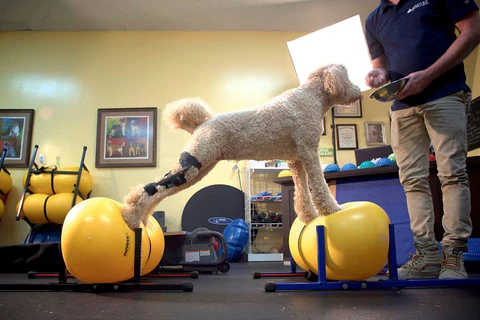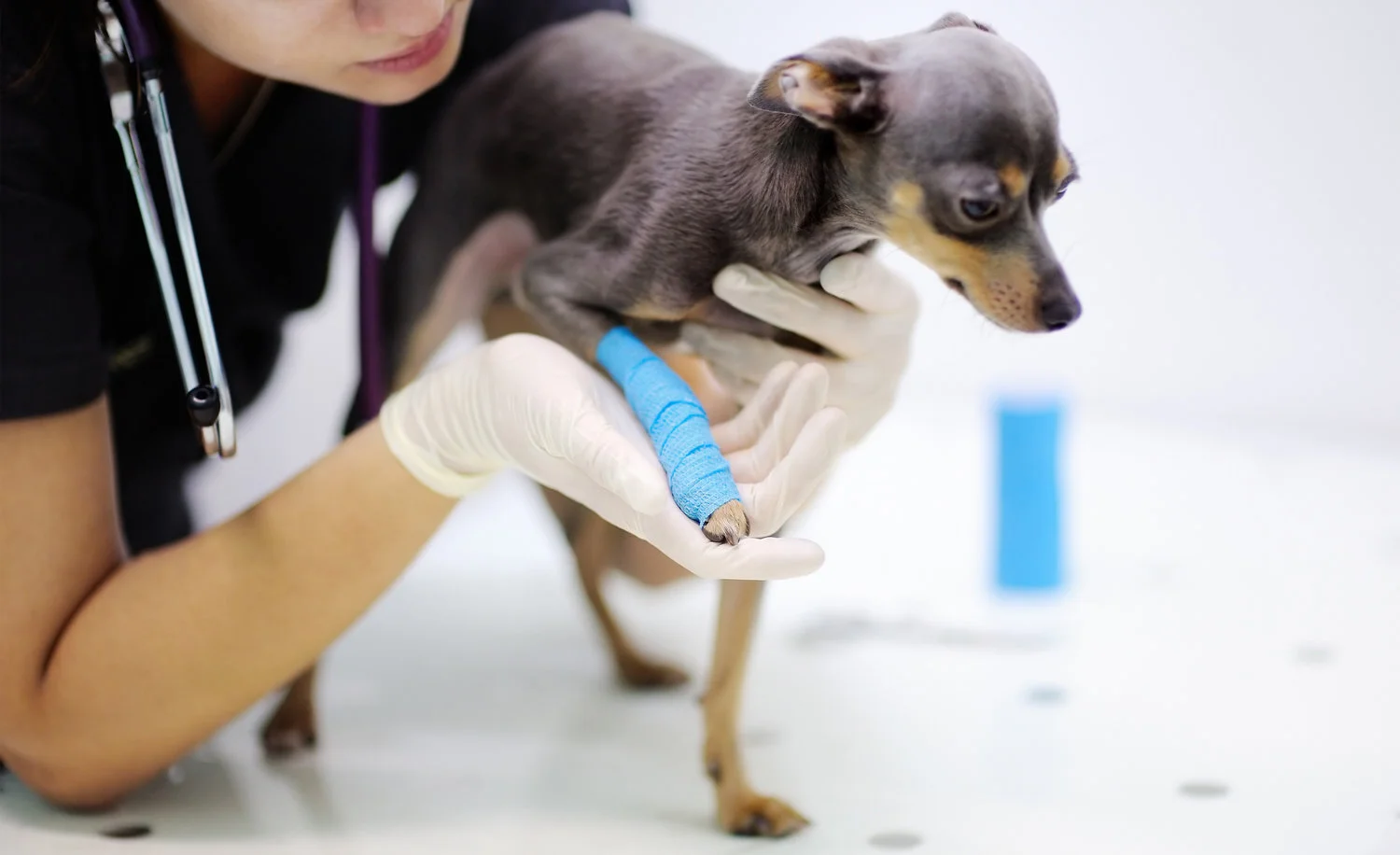How to Repair a Torn ACL (Anterior Cruciate Ligament) Injury? – In case your dog all of a sudden starts limping on one of his back legs, or does not want to put weight on it, you may be having a ruptured ACL injury- a frequently occurring but painful condition. Although we usually refer to ACL, in dogs, it is referred to it the Cranial Cruciate Ligament (CCL). Like the ACL in human beings, this ligament provides stability of the knee (also known as the stifle joint).
A ruptured ACL (or CCL) may either occur after a vigorous run or leap, or may be a long-term phenomenon because of wear and tear. In any case, it not only causes pain but also instability and, in most cases, lasting arthritis in case it is not managed well. We will discuss what makes this injury, how to fix it, and what the quality of the recovery really is for your furry friend.
Understanding a Torn ACL in Dogs
The ACL (or CCL) links the shin bone (tibia) to the thigh bone (femur) and holds the knee of your dog steady as you run. As it tears, in part or entirely, the tibia moves forward unnaturally, and this causes the joint to become unstable and painful.
Common Causes
Degeneration over time: most of the tears occur slowly, not as a result of a single traumatic stressor.
Excess weight: Overweight dogs place an additional burden on the joints, so they are at risk.
Breed and genetics: Breeds such as Labradors, Rottweilers, and Boxers are more susceptible.
Shocking motions: Rapid rotations, jumping, or falling clumsily may lead to a tear.
Signs to Watch For
You might notice:
- Limping or holding one leg up.
- Swelling around the knee.
- Difficulty in standing up, climbing stairs, or jumping.
- In a sitting position with the injured leg on the side.
- Unwillingness to play or exercise.
When you see any of these signs, it’s time you have your dog checked by a vet. The early diagnosis will greatly contribute to recovery.
How to Repair a Torn ACL in Dogs
ACL injury in dogs has no universal remedy. The most appropriate method will be based on the size, age, activity, and severity of the tear in your dog.
1. Surgical Options
Surgical repair is the surest method to heal knee stability in medium to large dogs or ones that have ruptured completely. The following common surgical procedures are as follows:
Lateral Suture Technique (Extracapsular Repair)
This is less invasive and an easier procedure that is commonly applied to smaller dogs.
The outside of the joint has a strong nylon suture that is put there to serve as an artificial ligament, holding the knee in place until scar tissue is formed. The majority of the dogs recover in a few months.
TPLO (Tibial Plateau Leveling Osteotomy)
Among the most common surgeries that are done on larger dogs that are active. To reconstruct the damaged ligament, the surgeon removes and relocates the tibia (shin bone) to alter the manner in which the knee supports weight. It is the most effective and needs a good surgeon and takes, of course, more time to heal.
TTA (Tibial Tuberosity Advancement)
This technique, like TPLO, involves a displacement of a part of the tibia in front to change the knee mechanics. It is not very invasive in certain instances, and the results of the procedure are exemplary among active dogs.
The three types of surgeries will focus on stabilizing the knee and enabling your dog to move painlessly.
2. Non-Surgical Management
Not all dogs do and should be subjected to surgery. Conservative management can be used in smaller or older dogs that are not active. This typically involves:
Strict rest: Restricting the activity for a few weeks to enable the formation of scar tissue.
Weight control: Making a dog lean helps a lot in minimizing the load on the joint.
Physical therapy: Controlled and gentle exercises and the use of hydrotherapy enable the reconstruction of strength.
Bracing: Knee braces may be used, but they are not a treatment.
Pain relief: Anti-inflammatory drugs that are given by your vet alleviate pain.
Although non-surgical options are capable of making the process more comfortable and mobile, they do not repair the torn ligament. The knee, in most cases, is not stable, and arthritis can develop at a higher rate compared to surgery.
Rehabilitation and Recovery
The process of healing does not end when an individual has been operated on; it is only a start. Patients must receive proper post-operative care to achieve long-term success.
Recovery Timeline
Week 1-4: The strict rest, walking on a leash, no stairs, and jumping.
Weeks 5-8: Continuous short walks; begin light physical therapy.
Weeks 9-12: Introduce controlled play, swimming, or light exercises back.
3-6 months: The majority of dogs resume the levels of almost normal activity, which depends on the procedure.
Never neglect the recovery plan of your vet. Excessive indulgence in the beginning will reverse months of restorative treatment.
Home Care Tips
- Fall is prevented by using non-slip mats to cover slippery floors.
- Maintaining the weight of your additional weight retards recovery.
- Give joint supplements (such as glucosamine and omega-3s) with the recommendation of your vet.
- Mental stimulation – puzzle feeders, chew toys can be used to avoid boredom during recovery.
Conclusion
Tearing the ACL in the dogs is not merely an injury that causes pain to your pet anymore; it is a significant disturbance to the mobility and quality of life of your pet. However, the positive thing is that through prompt diagnosis, appropriate line of treatment, and proper follow-up care, the majority of dogs recover quite well.
Whether you opt to go under the scalpel or implement conservative care, your dog will be patient, consistent, and loving towards you as it takes care of itself. Things will work out, be positive, and in a minute, you will be holding that wagging tail and bouncing about again.
FAQs
Does a dog heal its torn ACL on its own?
In little or partial tears, particularly in small dogs, rest and rehab may occasionally assist the knee in stabilizing with scar tissue. Nevertheless, a full tear normally requires surgery in order to heal and to have long-term comfort.
What is the duration taken by a dog to recover after ACL surgery?
Within a week or two, most dogs begin to gain weight on the leg, but it is not until 3-6 months, depending on the type of surgery and the rehabilitation program, that your dog seems to be able to run and play again.
What would happen if I do not treat my dog’s torn ACL?
The knee is not treated, and thus, the onset of chronic pains, lameness, and severe arthritis occurs. The other knee tends to compensate in the long run and even sustain an injury.
Will my dog be able to run again after ACL repair?
Yes! Through good surgery, rest, and rehabilitation, a lot of dogs go back to running, swimming, and playing as usual. The point is that you should comply with the instructions of your vet after surgery.









